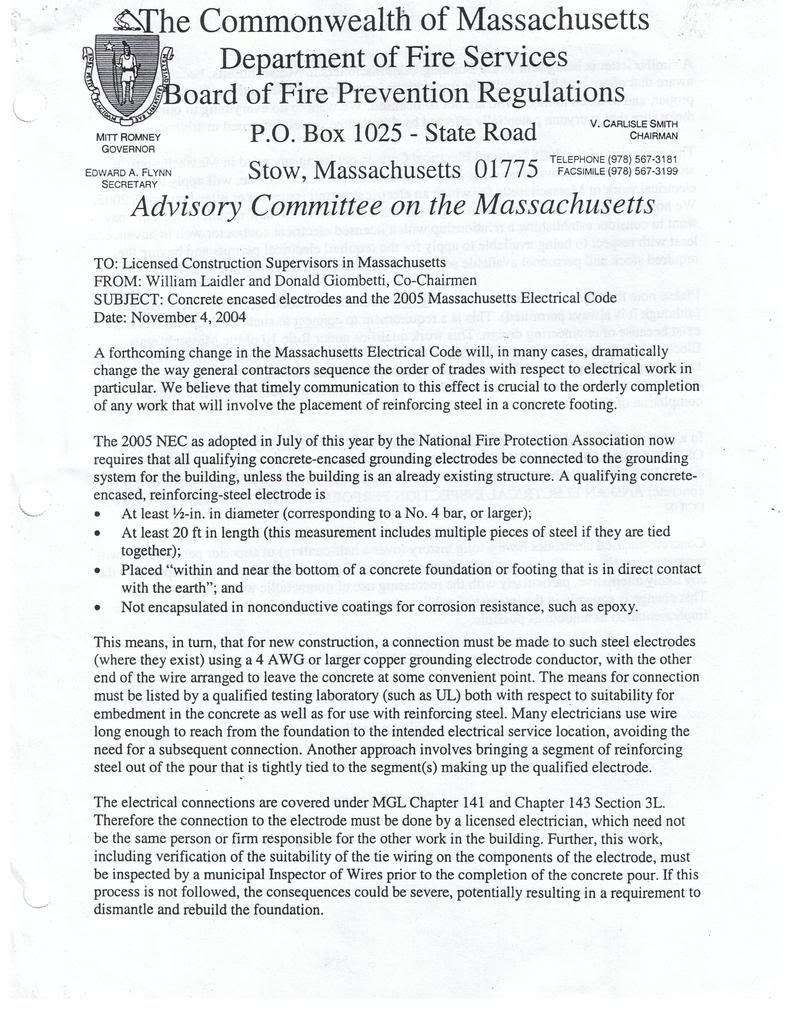In-spector
Member
- Location
- New Jersey/Pa
I've been working as a third party inspector inspecting installations of compressor stations and metering sites in the natural gas industry. We make our contractors adhere to NEC250.52(A)(3) for all pipe supports, equipments pads, foundations, etc..where 20 ft or more of re-bar is used. Lately the contractor has been bringing in pre-cast concrete supports. We can find no way to adhere to 250.52 without chopping into the precast. We were told the lifting eyes were tied into the re-bar but checked between eyes with a continuity tester and got no continuity. Is pre-cast exempt from 250.52?



